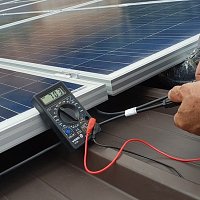
In the realm of clean energy, an unexpected connection has emerged between solar panels and nuclear power. Wacker Polysilicon, a company specializing in polysilicon for solar panels, set up shop near the Watts Bar nuclear power plant complex in Tennessee back in 2009, even before the new nuclear reactor unit opened in 2017, writes Saleem H. Ali for Forbes.
What drew Wacker Polysilicon to this location? It wasn't just the power capacity; it was the quality and reliability of the power system. The facility's voracious power needs consume 20% to 25% of a nuclear plant's full capacity. This investment has brought approximately 650 full-time jobs and $2.5 billion in total local investments since 2009, exemplifying the intricacies of energy technology and its interactions.
The dynamic between solar and nuclear energy is evolving. Improving the resilience of solar infrastructure can make initial investments more sustainable and counter low power density issues. Solar and nuclear can complement each other, particularly with the emerging generation of reactors that offer greater control over energy production. While solar power necessitates backup supplies for consistent delivery, new reactors, like molten salt reactors, offer flexibility and effective backup for renewables.
As the energy landscape transforms, scientific developments and synergies between renewables and nuclear energy are on the rise. The transition to a cleaner energy future calls for open-mindedness and adaptability, embracing revisionism where needed. With this approach, the potential of nuclear power, in harmony with renewables, remains an important part of the clean energy equation.
Source: forbes.com













